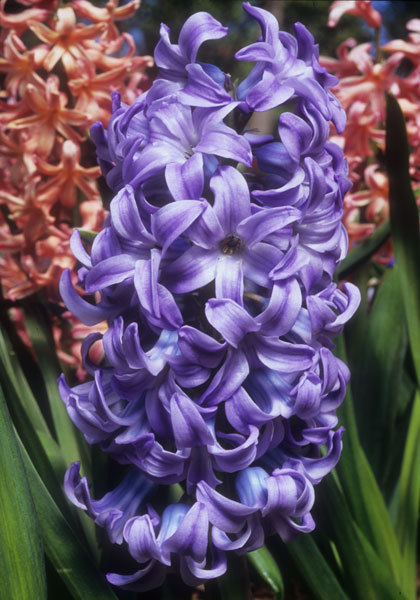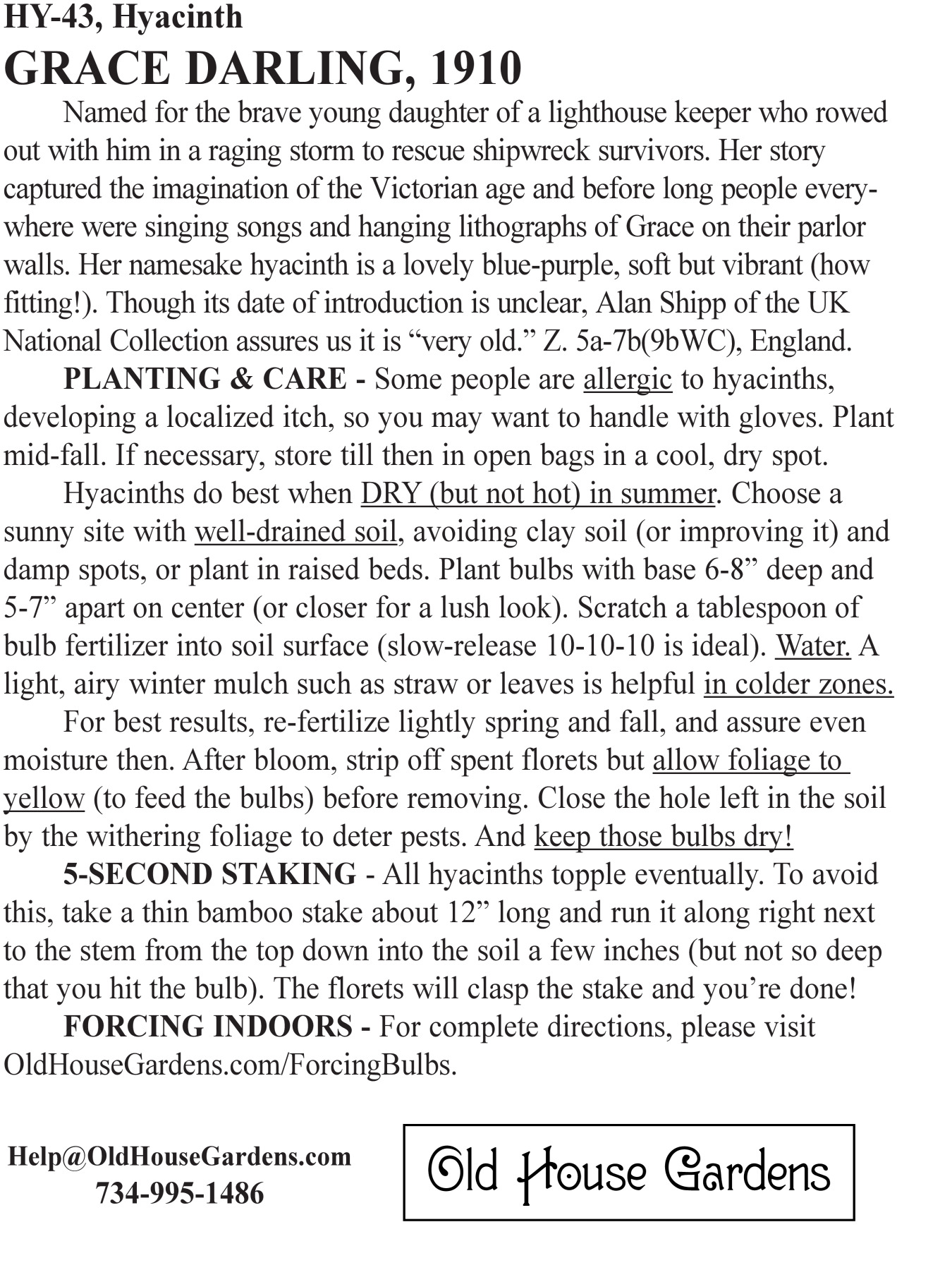|
|

  
|
|
‘Grace Darling’ is named for the brave young daughter of a lighthouse keeper who rowed out with him in a raging storm to rescue shipwreck survivors. Her story captured the imagination of the Victorian age and before long people everywhere were singing songs and hanging lithographs of Grace on their parlor walls. Her namesake hyacinth is a lovely blue-purple, soft but vibrant (how fitting!). Though its date of introduction is unclear, Alan Shipp of the UK National Collection assures us it is “very old.” Zones 5a-7b(9bWC), from England. |
|
TYPE single SUB TYPE single ZONES 5a-7b(9bWC) HEIGHT 10-12” BLOOM SEASONS mid spring SOURCE UK National Collection LIGHT full sun |
PLANTING & CARESome people are allergic to hyacinth bulbs, developing a localized itch, so you may want to handle them with gloves. Plant in mid-fall. If necessary, store till then in open bags in a cool, dry spot. Hyacinths do best when DRY (but not hot) in summer. Choose a sunny site with well-drained soil, avoiding or improving clay or damp soil, or plant in raised beds. Plant bulbs with base 6-8 inches deep and 5-7 inches apart on center (or closer for a lush look). Scratch a tablespoon of bulb fertilizer into the surface soil (slow-release 10-10-10 is ideal). Water. A light, airy winter mulch such as straw, oak leaves, or pine boughs is helpful in colder zones to minimize root damage from soil repeatedly freezing and thawing. For best results, re-fertilize lightly spring and fall, and assure even moisture then. After bloom, strip off spent florets but allow foliage to yellow (to feed the bulbs for next year’s bloom) before removing. Close the hole left in the soil by the withering foliage to deter pests. And keep those bulbs dry! Five-Second Forcing — All hyacinths — even wild hyacinths — topple eventually. Usually it’s no big deal, but if the weather is unseasonably warm it can be disappointingly premature. To counter this, take a thin green bamboo stake about 12 inches long and run it along right next to the stem from the top of the bloom-spike down into the soil a few inches (but not so deep that you hit the bulb). The florets will clasp the stake and you’re done! Hyacinths are easy to force for winter bloom. For complete directions, see our Forcing Bulbs page. Learn more about growing and enjoying hyacinths at our Hyacinths Newsletter Archives and Bulbs as Cut-Flowers page. |

|
SPRING
|
· |
SUMMER
|
· |
FALL
|
· |
LEARN MORE
|
· |
ORDERING
|

|










